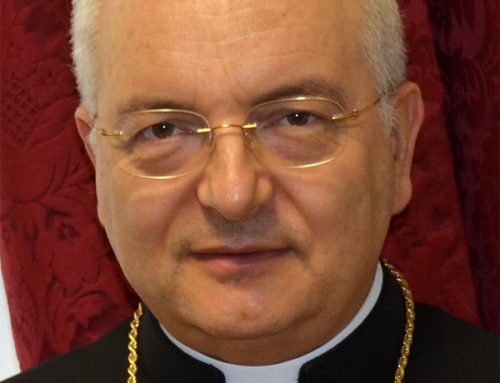4-wheel drive vehicle needed for pastoral work in the new diocese of Bahir Dar–Dessi
Many foreign tourists fly to Bahir Dar in Western Ethiopia. The third largest city in the country, it is a place where you can not only holiday beneath blossoming tropical trees on the shores of Lake Tana, or take a boat trip on the lake itself to admire the pelicans and the hippopotamus and see the source of the Blue Nile. You can also admire the ancient monasteries here. In fact, the Emperor Haile Selassie had a palace here.
But just a few miles further on from Bahir Dar, a different world begins. The huts along the roadside become poorer and poorer; you see children driving goats along the road, donkeys pulling one-axled wooden carts laden with firewood, sacks of charcoal or hay. Whole caravans of donkeys cart yellow plastic canisters of water along the road, since there is no running water here. Small groups of people can be seen, trudging for hours on end through the searing heat, carrying sick people on rough stretchers of branches and straw to the clinic in the nearest town. By the time they arrive, it is often too late.
The further you go from the town, the more difficult the roads are to navigate. Finally, you come to the Benishangul-Gumuz-Region, one of the poorest and most neglected regions of the country, close to the frontier with Sudan. About 990,000 people live here, somewhere over one fifth of whom belong to the Gumuz ethnic group. In the late 19th century, and even during the first third of the 20th century, many of the Gumuz people fell victim to the slave traders. To this day they still live as hunter gatherers. They are very open to the Good News of the Gospel and welcome the Church when she reaches out to them, for the Gospel liberates them from many of the traditional notions that once kept them in fear – not least their great fear of witchcraft. But at the same time these people need practical, material help, for they have no medical provision, no schools, no infrastructure. Here too the Church is helping them, her pastoral care and development aid going hand in hand.
This year the Catholic Church established the new diocese of Bahir Dar–Dessi in this area. It currently has some 20 parish communities and around 40 outstations – villages with small chapels, where Holy Mass is celebrated. However, the priests have to travel very long distances in order to reach the faithful, and in addition they generally have to celebrate Holy Mass several times on Sundays in several different places. And during the rainy season many of the roads are transformed into giant mud pools, which are impassable without a four-wheel-drive vehicle. But for now the diocese, which is still in its infancy, does not have any such vehicle to serve these remote regions.
ACN has therefore promised the sum of 25,000 Euros so that the diocese can obtain a suitably robust vehicle for its pastoral work in these areas.


